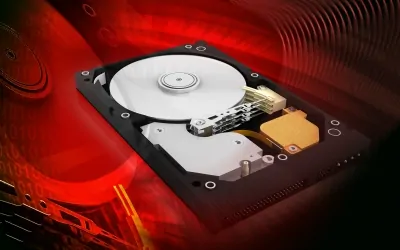Last modified 01/27/2024

Any use that we give to our computer, always leave a trail. Whether, when downloading files, running programs or simply surfing the internet, all this creates temporary files that serve as a backup if you want to perform the same operation again. However, temporary files take up space on the hard drive, so it is advisable to remove them. In this article you’ll learn how to do it.
Over time, the accumulation of temporary files ends up being a serious problem, which means, for most people, in the necessity to buy another computer. Those who care to understand what is happening know that the cause of this sudden slowness or “shortness of breath” on their computers are temporary files that are clogging the system.
A temporary file is created by a program on the computer that is enabled when memory is needed or when the operating system creates backups. Thus, if a fault occurs in the system, the information will be retrieved easily.
Until this point, everything is positive; the problem starts when these files begin to accumulate because the systems or software that created them don’t eliminate them. The accumulation occurs in the hard drive, so it ends up being detrimental to the internal memory of the computer, making it slowly over time.
In the case of the Windows operating system, temporary files appear with a. Tmp file extension, which can vary according to the operating system, but in all those available in the market, it creates a separate folder where you store all temporary files. For Windows the path of this folder is: C: \ Windows \ Temp.
So far, you may have noticed that it is clear the damage involves maintaining temporary files stored on your hard drive, so it is necessary to remove them. There is no need to take radical steps like formatting your computer; there are other ways that we present below. These are:
Form A: manually
To manually remove your temporary files carefully follow the following sequence of steps:
1. Close programs you are currently using.
2. Click Start Run
3. In the window type% temp and then simply click OK.
4. Once the folder appeared, press Ctrl + A to select all
5. Press the Delete key (Del)
6. Confirm desired by clicking on Yes
Form B: using specialized software
The programs of which we are going to talk now, are called hard disk cleaners, because they do a general cleaning of temporary files on the hard disk. In the list that we present below are considered free or freeware programs, which you can find by searching the web. The list is as follows:
Agent-Disk Cleaner:
Multilanguage program also in charge of disposing the temporary files, delete web browsing history and log on to Windows.
RegSeeker:
It does not require prior installation, useful for quick removal of temporary files.
BleachBit:
it is a program that can be downloaded for Windows and Linux, but also has a portable version that does not require prior installation. It is useful to eliminate fine navigational records, cookies and temporary files.
CCleaner:
Removes temporary files system and Internet browsers, empty the Recycle Bin, and more. Although only available for Windows, this option is one of the most used in the world, apparently also is one of the best options. The removal process begins with a simple click on “Scan”
Finally, now you know that what makes your computer slow is probably due to the accumulation of temporary files, you should start thinking about making a monthly cleaning of your computer.
Image courtesy of [image creator name] / FreeDigitalPhotos.net
Tags:
how to delete temporary files, delete temporary files, tips to delete temporary files, free tips to delete temporary files, ways to delete temporary files, hard disk cleaner, free hard disk cleaners, get free hard drive cleaners, how to get free hard disk cleaners, free hard drive cleaners